Car amplifier power wire fuses
How do you choose the right fuse for your amp?
Your amp power wire needs a fuse. What size fuse to use depends on the material, thickness (gauge), and length of the power and ground wires used for your amplifier's installation. In this article, we'll chart out which fuse you should use for your amp's wiring, and why.
A car amplifier's 12-volt power wiring can carry enough electrical current to burn up and destroy not only the wires themselves, but also your car. This could happen in the event of an accidental short circuit, like when a frayed power wire touches the vehicle chassis.
To protect you and your car from an electrical disaster, a fuse must be installed on the amp power wire — as close to the car's battery as possible.
A fuse will protect you and your car from a catastrophic electrical disaster
It's dangerous enough driving around with a tank loaded with gasoline that could catch fire or explode in the event of an accident, you certainly don't want to add the threat of an electrical fire occurring under the same circumstances. An in-line fuse on your amplifier's power wire will protect you and your car from almost any electrical disaster related to the amp's installation.

This could have been much worse
Fuse as close to the battery as possible
In the event of an accident, you wouldn't want a live power wire flopping around inside your car. The vehicle's chassis and metal body parts are all connected to ground, so when a loose power wire touches metal, a short circuit is created that produces runaway current flow and heat build-up. This is why we recommend installing your fuse as close as you can to the positive battery terminal, so no loose ends can cause damage.
Be sure to route the power wire around other things in the engine compartment so it doesn't get in the way. It's also a good idea to secure the power cable and fuse holder to the vehicle body (typically with wire ties) to keep it from bouncing around over time. (In this image, we sat the fuse holder on top of this fuse box simply to get a better photo.)

Neatness counts for a power wire installation
What's current and why is it dangerous?
To help visualize the concepts, it's often useful to study an electrical circuit as if it were a closed arrangement of pipes filled with flowing water — because similar rules and limitations apply. You can think of electrical current, using the plumbing analogy, as the amount of water inside a given volume of pipe at a particular moment in time. As we pump more and more water inside that section of pipe in that same amount of time, the pressure inside the pipe increases until it reaches the maximum strain capacity of the pipe's construction material, and then the pipe bursts.
Electrical resistance generates heat
Instead of water-flow resistance raising the pressure inside a pipe, electrical resistance to current flow creates heat in the wire. Too much current flowing through a wire's resistance could overwhelm the conductor material or insulation and melt it or set it on fire. Every kind of wire has a limit to how much current it can safely handle before over-heating.

Crutchfield trainer JR shows a blown fuse
When a fuse blows, something is wrong
A fuse works by introducing a small weak metallic segment in the power circuit that's designed to pass a rated amount of current, but melt apart, safely breaking the circuit open, when that current rating is exceeded. The fuse is there to protect you.
When a fuse blows, you should thank it for saving your life, and then find out why it had to sacrifice itself, before you replace it. There's no sense in replacing a fuse that'll just blow again because the loose wire that caused the problem in the first place was never fixed.
Note: Sometimes you can't determine whether or not a fuse is blown by visual inspection, and a multimeter or continuity tester must be used to verify a broken connection or that voltage is not present on both sides of the suspect fuse.
Safety note: Never replace a blown fuse with a higher-rated fuse — that could allow the wires and your car to burn to the ground before the fuse blows.

PowerDrive 300-amp circuit breaker (#996PDSB300)
Circuit breakers
Circuit breakers are like fuses that can be re-set without needing replacement. Besides safety reasons, using a circuit breaker can come in handy if you regularly blast competition-level bass at or above your amp's power capacity, or you want a covert system-off switch so valets and mechanics can't play around with your sound system. Some people don't trust circuit breakers because they take a little longer to trip open than would an equivalent fuse — but that really shouldn't make any difference in a car audio installation.
Maximum and minimum fuse ratings
The smallest fuse that'll work for your system should provide enough current to support your amplifier's maximum power output. The only penalty for using a fuse too small is the expense of replacing fuses that blow when the amp tries to produce its rated power. The largest fuse size to use will protect the power and ground wires from melting while also allowing maximum current flow to the amplifier, letting it produce its maximum output power.
To avoid danger, obey the limits
For safe installations, your power wire should use a fuse sized equal to or less than the maximum amperage ratings listed in the chart below. For information about what size wire to use for your amp installation, refer to our Wire gauge chart.
| Power wire | Max fuse size |
|---|---|
| 00 AWG | 400A |
| 0 AWG | 325A |
| 2 AWG | 200A |
| 4 AWG | 125A |
| 8 AWG | 50A |
| 10 AWG | 35A |
| 12 AWG | 20A |
| 14 AWG | 15A |
| 16 AWG | 7.5A |
| 18 AWG | 5A |
Chart accuracy: The above chart should be used as a general guideline — many manufacturers spec their wires differently. When discrepancies occur, always use the wire manufacturers' fuse recommendations. If you're using an amplifier wiring kit, use the fuse that came with the kit.

Some fuse holders use two fuses, wired together in parallel for the desired amperage rating
Wire material: The chart is for stranded oxygen-free copper (OFC) wire about 15 feet long. Copper-clad aluminum (CCA) and solid copper household-type wiring have different current-carrying capacities, use different-size fuses, and are generally inappropriate for mobile audio applications.

Kicker marine-grade ignition-protected MRBF 60-amp fuse (#20647RBF60)
Marine fuses: Regular fuses and circuit breakers often create a small spark when blown or tripped, so would be dangerous in most marine applications and wherever gasoline fumes are present. Marine-grade ignition-protected fuses and breakers are the safest way to protect your wiring when afloat.
What about the fuses onboard the amplifiers?
When fusing your main power wiring, ignore the onboard fuses your amplifiers and other devices may have. Plan your system fusing as if those fuses didn’t exist and use the fuse rated for the main power wire. Those onboard fuses are there to protect the individual devices themselves when something goes wrong internally — so even if an onboard amplifier fuse blows, the power and ground wires near it will still be electrically active and dangerous. Remember, the fuse on the main power wire protects the wiring and your life. When something goes wrong, you want power to shut off for the whole system, including the wiring.
Some amplifiers don't have onboard fuses — for whatever reasons the manufacturers have decided. In multi-amp setups that use power distribution block wiring, each amplifier without an onboard fuse will require, for safety's sake, an additional in-line fuse, rated for the amp's power wire capacity, mounted near the amp itself or the distribution block.
Which one's right for you?
Give us a call when you're purchasing an amplifier and its installation gear, so you can be sure you get the right power wire and fuse for your amplifier to safely play at its maximum potential.





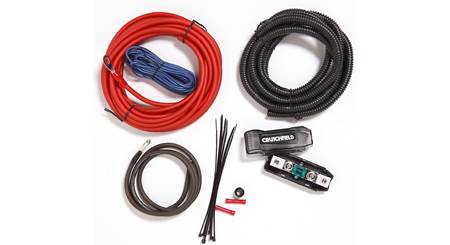
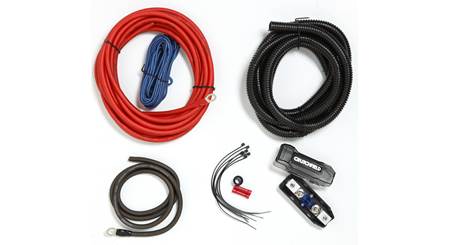

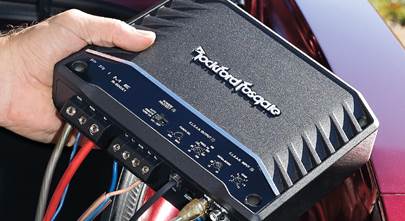

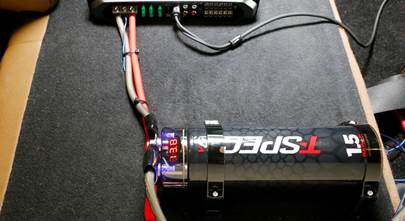
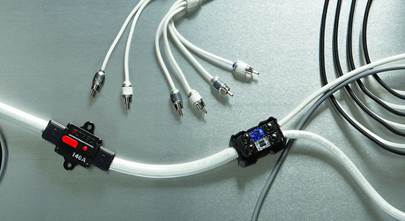
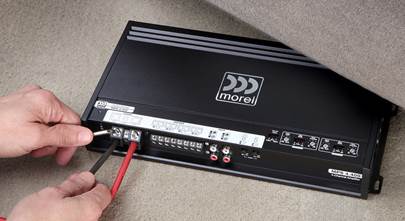

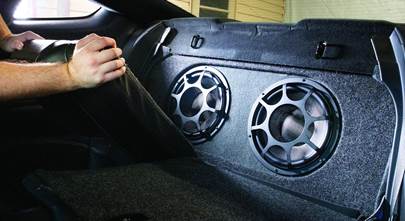
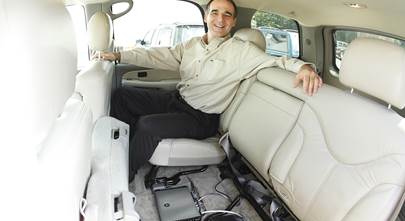


Ryan Quick from Des Moines
Posted on 12/24/2023
Hi, I have an Alpine S2-A120M mono block amp running two S series 10's. I am adding an Alpine R-A60F R-Series 4 Channel Amplifier - 150 Watts x 4 to power my aftermarket cabin speakers. Currently have a 4 gauge power wire supplying the mono block. Is that wire sufficient to just split off of and run power to the second amp using a distribution block? Do I need to upgrade the fuse near the battery....or to ask it another way what size fuse do I need to ensure is there?
Buck Pomerantz from Crutchfield
on 12/26/2023
Morgan
Posted on 12/21/2023
I have a JL500/1. I have 4 gauge power and ground wires. Is there a minimum fuse size for this size wire? The amp calls for a 50amp fuse however there is not an external fuse on it. Would I need to place a fuse at the battery as well as at the amplifier? Is it safe?
Buck Pomerantz from Crutchfield
on 12/22/2023
Fernando from Irving
Posted on 12/17/2023
I have a jl xd 600/1 and xd 600/6 on the cable spiter 0 gauge out to 2 4 gauge and a 60 fuse on each but on my main fuse next to the battery what should be the fuse there
Buck Pomerantz from Crutchfield
on 12/18/2023
Faisol
Posted on 12/2/2023
Hi! I have two amp. One is JBL Stage A9004 (4 channel, RMS power @ 4 ohm 90w, Total Peak Power: 880w) for 4 speaker (polk db6502 & polk db652). Another one is JBL Club A600 (mono, RMS power @ 4 ohm 350w) for subwoofer (polk db1042 svc). In these configuration what should be spec of power wire and what should be the amp of the fuse for this power wire.
Buck Pomerantz from Crutchfield
on 12/4/2023
Will
Posted on 11/16/2023
I have a Power Acoustik RZR1-2500D Amplifier with the specifications of: Max Power: 2,500 Watts and RMS Power 2O: 650 Watts x 1. The amp is for two 12 inch Kicker subwoofer speakers. What size wire would I need?
Buck Pomerantz from Crutchfield
on 11/17/2023
Mike F
Posted on 11/11/2023
I'm going to run 2 awg back to a distro block and then 4 awg to 2 identical 80A internally fused Polk amps. I'll put a 150-200A fuse at the battery. My question: can I get away with not fusing at the block if the 4 gage leads are only 18-24 inches? Thanks Buck Mike from Livermore
Buck Pomerantz from Crutchfield
on 11/12/2023
Jonathan from Brooklyn NY
Posted on 10/28/2023
Hey I'm a running a Power Acoustik Reaper 3500W REP1-3500D amp with 4 gauge wire all the way to battery, I have a 4 awg power wire to an ANL Fise holder with a 250 amp ANL fuse. I want to know if that's good enough or should I go with. 2/0 AwG power wire with a 400 Watt fuse?? Thanks in advance
Buck Pomerantz from Crutchfield
on 10/28/2023
Kiley Bradberry
Posted on 10/25/2023
Using a KICKER 46CXA12001T CXA1200.1 1200 Watt RMS Mono Class D Car Stereo Amplifier Amp with KICKER CompVR 12" (30cm) Dual subwoofers in Vented Box, 2-ohm, RoHS Compliant. What size power and ground wire and what size fuse by the battery?
Buck Pomerantz from Crutchfield
on 10/25/2023
Luis
Posted on 10/23/2023
I have two JBL club A600 amps and each one connected to a Kicker 05DCVR124 subwoofer. I was wondering what type of fuse I should use if I'm using 4 gauge wires.
Buck Pomerantz from Crutchfield
on 10/25/2023
Chris
Posted on 10/17/2023
So i have two 1800 w rms 3600w peak Kickers amps each powering one 1500rms 3000peak mojo subwoofer.. However the amps are being split powered off one 1/0 GA 2400w cable from Stinger. Is my wiring setup too small? And to stick to the same setup what size fuse might be recommended?(fuse that came with wiring kit blew)
Buck Pomerantz from Crutchfield
on 10/18/2023